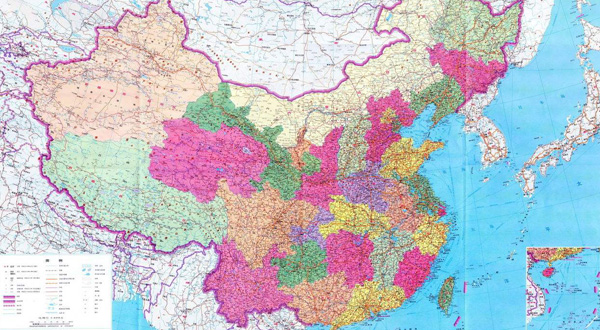Now - 04:25:56
Production function
Production function – it is expressed through economic and mathematical model of dependence of the amount of manufactured goods from the respective factors of production with which it is made. Consider this concept in more detail.
Production function always has a specific appearance, as it is designed for a particular technology. The introduction of new technological developments entail a change in or creation of a new kind of dependency.
This function is used to find the optimal (minimum) amount of cost necessary to manufacture a certain quantity of goods. For all production functions irrespective of what type of production they represent, is characterized by such General properties:
• growth in the volume of manufactured goods due to only one factor (resource) has a finite limit (in the same room can normally only work a certain number of workers, since the number of places is limited area);
• factors of production can be used interchangeably (production process automation) and complementary (workers and tools).
In General, the production function looks like this:
Q = f (K, L, M, T, N) in this formula,
Q — the volume of manufactured goods;
K — equipment (capital);
M — the cost of materials and raw materials;
T — technology;
N — entrepreneurial abilities.
The Types of production functions
There are many types of this relationship that consider the impact of both one and several of the most important factors. However, the most famous were two main types of production functions: two-factor model of the form Q = f (L; K) and the Cobb-Douglas production function.
Two-Factor model Q = f (L; K)
This model considers the dependence of the output (Q) from labor (L) and capital (L). Quite often, for the analysis of this model group is used, the isoquants. The isoquants – such a curve that connects all points of possible combinations of production factors to produce a specific quantity of goods. On the X-axis usually note the costs of labor, and the Y-axis – capital. On the same graph, draw several isoquants, each of which corresponds to a certain volume of products when using specific technologies. The result is a map of isoquants with different quantities of manufactured goods. It will be the production function for this enterprise.
For the isoquants in common the following properties:
• the further the curve is from the origin, the higher the volume of production;
• recessed and top-down view of the isoquant is associated with the decrease in the use of capital with a stable volume of manufactured goods causes a rise of labor costs;
• concave shape of the isoquant depends on the maximum permissible limits of technological substitution (the amount of capital which can be replaced by 1 additional unit of labor).
The Cobb-Douglas production Function
This production function, named after the two American explorers, where total output Y is dependent on used in the production process resources, such as labor L and capital K. the formula:
Y=AKαLβ
Where α and b – constants (α>0 and b>0);
K L and – respectively the capital and labor.
If the sum of the constant α and b is equal to one, it is assumed that such a function there is a constant effect of scale. If the parameters K and L are multiplied by any coefficient, then Y must be multiplied by this same factor.
The Model is Cobb-Douglas can be applied to any individual firm. In this case, the α – share of total cost going to capital, and β – the share going to labor. Model Cobb-Douglas can also contain more than two variables. For example, if N – land resources, the production function becomes Y=AKαLβNγ, where γ – constant (γ>0), and α + β +γ = 1.
Article in other languages:
AR: https://tostpost.com/ar/business/22992-production-function.html
BE: https://tostpost.com/be/b-znes/40738-vytvorchaya-funkcyya.html
DE: https://tostpost.com/de/business/40303-produktions-funktion.html
HI: https://tostpost.com/hi/business/24594-production-function.html
KK: https://tostpost.com/kk/biznes/41121-proizvodstvennaya-funkciya.html
PL: https://tostpost.com/pl/biznes/42947-produkcyjna-funkcja.html
PT: https://tostpost.com/pt/neg-cios/42595-fun-o-de-produ-o.html
UK: https://tostpost.com/uk/b-znes/41615-virobnicha-funkc-ya.html
ZH: https://tostpost.com/zh/business/31270-production-function.html

Alin Trodden - author of the article, editor
"Hi, I'm Alin Trodden. I write texts, read books, and look for impressions. And I'm not bad at telling you about it. I am always happy to participate in interesting projects."
Related News
Material costs of the enterprise
Production activities of any company associated with the implementation of the various costs. They are an indicator of past and future abilities of the involvement of economic resources in all production processes to achieve the u...
Elastic and inelastic demand, concept of elasticity
the Demand – is the amount of goods or services that buyers are willing to buy at current prices over a certain period of time. Between the demand for the product and its price there is the following dependence: the higher t...
One of the ways of ensuring entrepreneurship is financing. Will there be implemented a project for development and establishment depends on whether found the funds. the funding Sources are divided into two large groups: internal a...
The coefficient of elasticity of demand
supply and Demand have the ability to adapt to changing market conditions, is called elasticity. Today, virtually no section of the economy is not complete without this concepts: theory of the firm, analysis of supply and de...
Every entrepreneur should clearly understand what audit is and why you need it. Audit activity is a complex of measures aimed at conducting a thorough check of correctness of drawing up and keeping of accounting and financial and ...
The goals of the organization: features and classification
the Success and financial soundness of the company will depend on how well the goals of the organization. This process is determined by the conditions of their implementation on the nearest and long term period. Currently th...



















Comments (0)
This article has no comment, be the first!